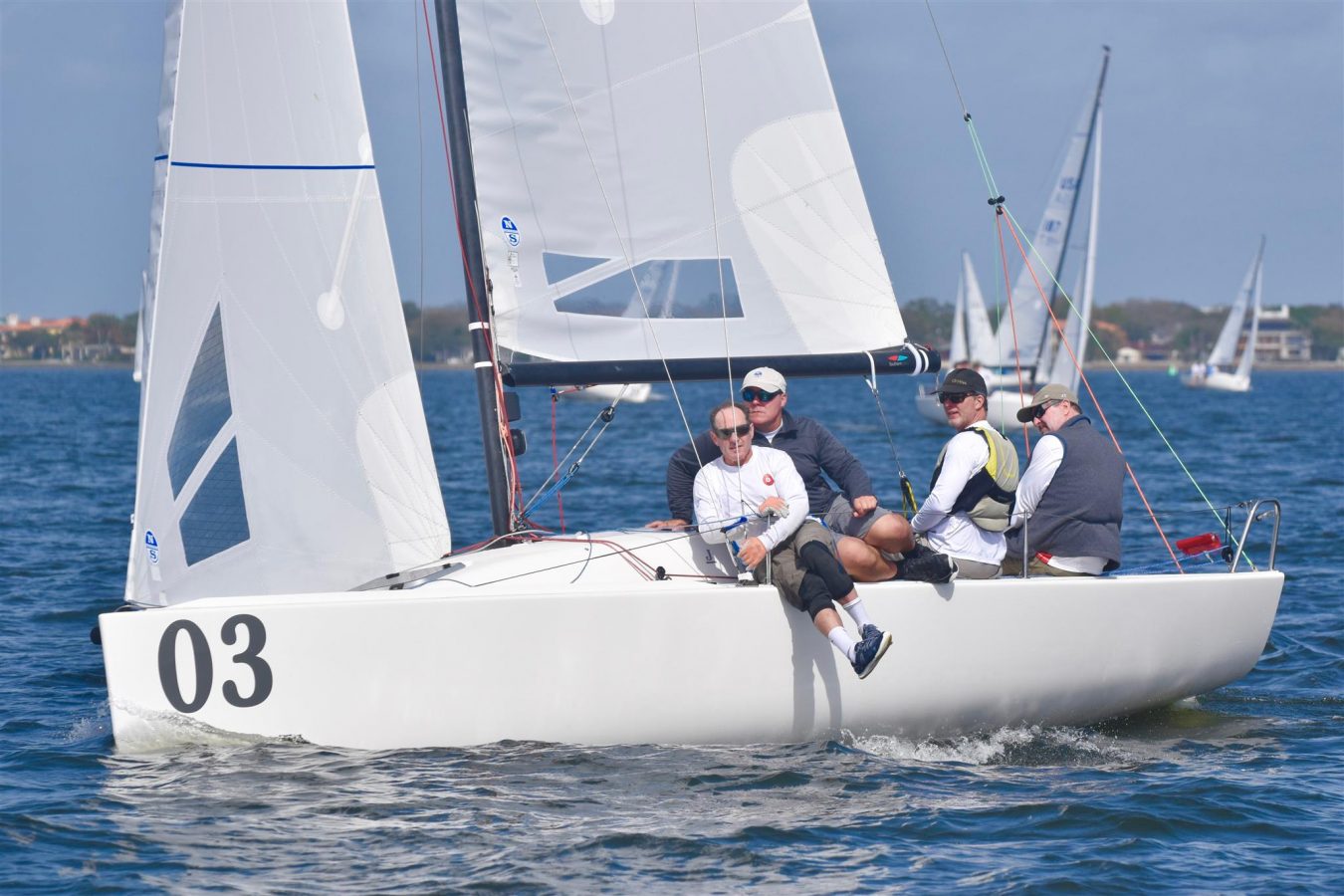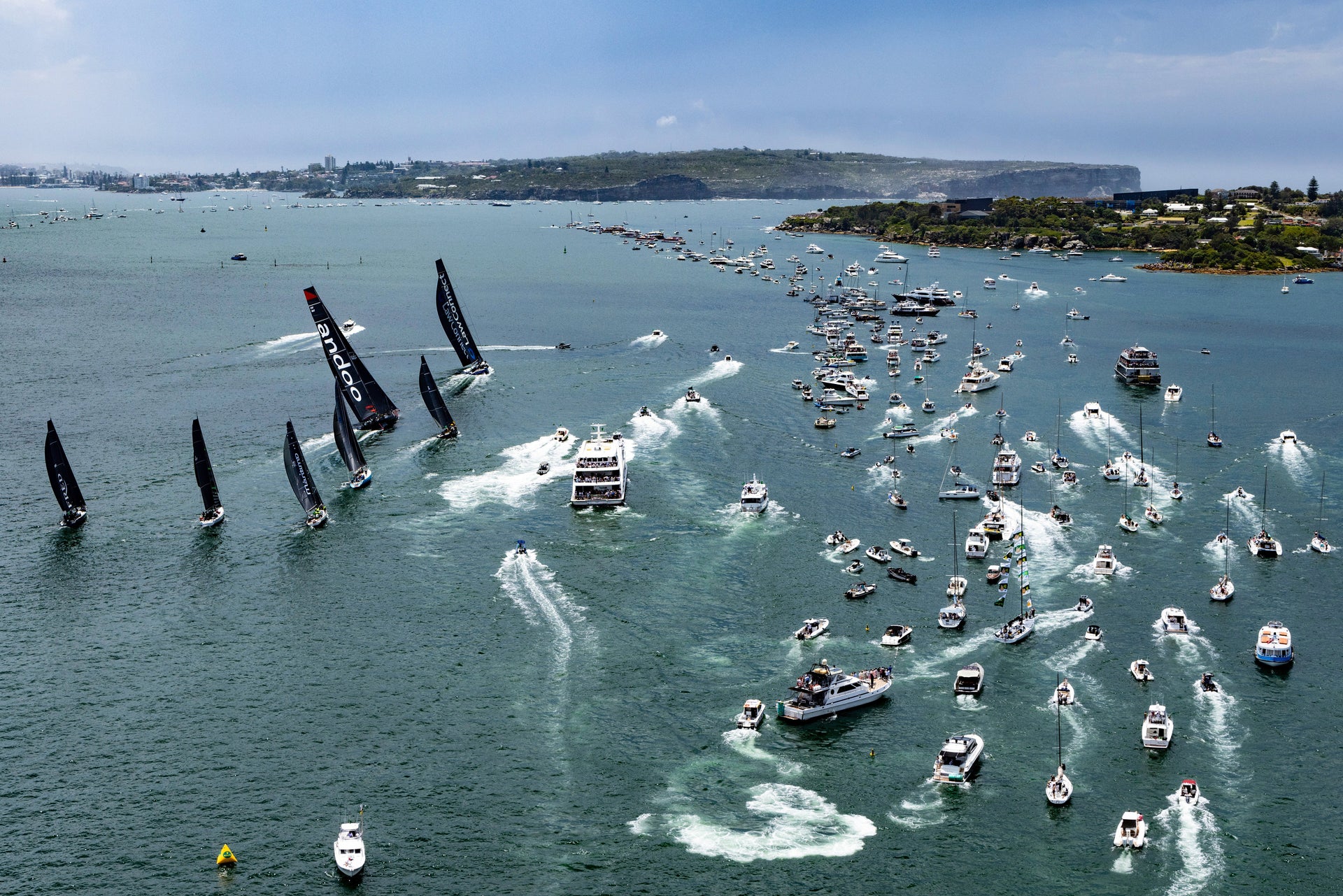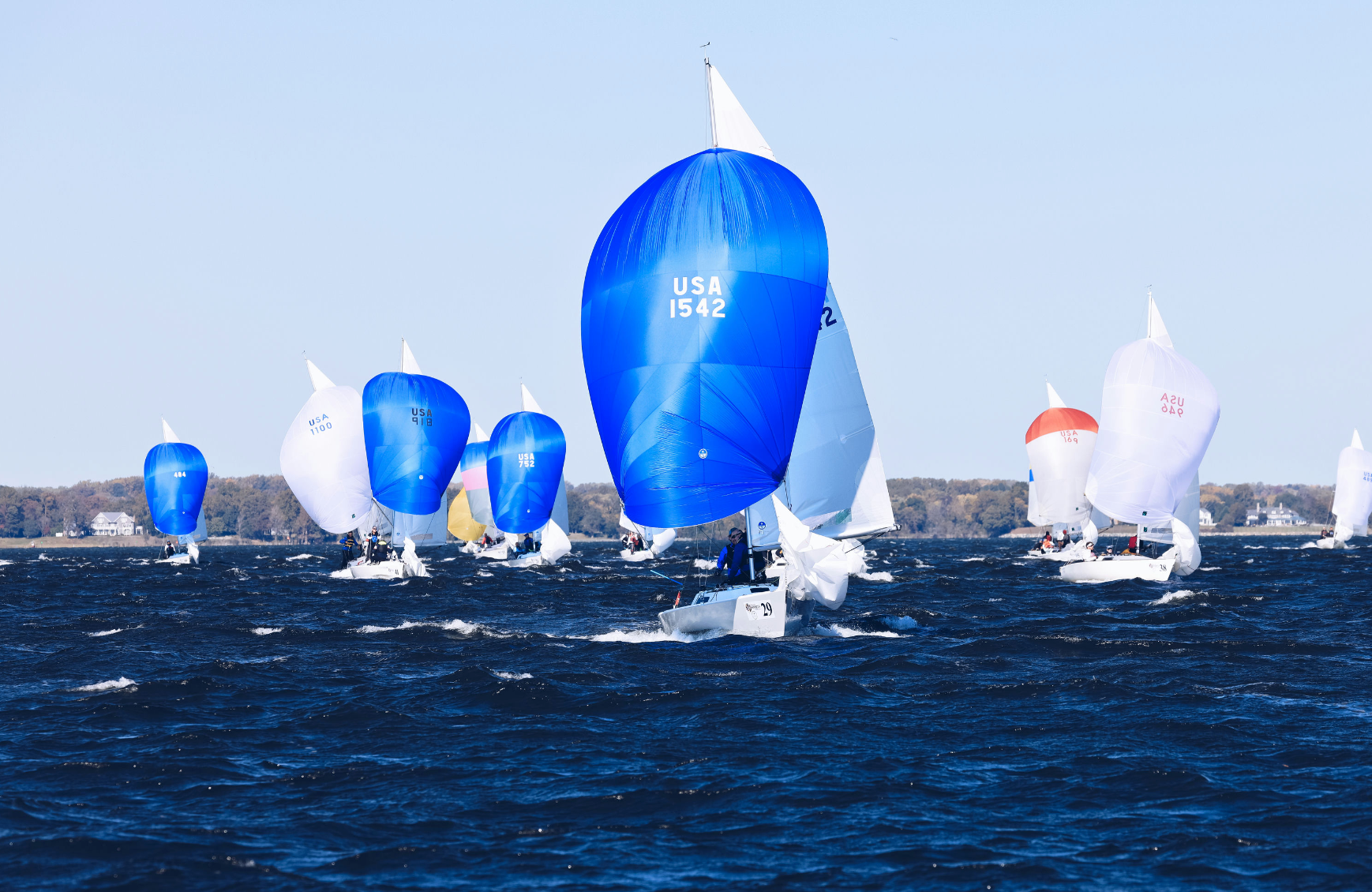HOW TO SURVIVE LIGHT AIR IN A LARGE FLEET
HOW TO SURVIVE LIGHT AIR IN A LARGE FLEET
Challenging conditions, team Flojito 3JT had it figured out

The third event of the 2017-18 J/70 US Winter Series was sailed in light and shifty conditions. Even some of the best teams struggled with the unknown of when the next shift would happen, what would be the end result, and how they could set themselves up for the next puff without seeing it first. Some came out ahead, others had their worst finishes. Challenging conditions for all, but one team had it figured out and was confident in their strategy. Here are a few of the lessons learned by winning team, Jack Franco’s Flojito 3JT:
Crew Weight
The J/70 is very sensitive to weight placement and movement. Each upwind leg we work hard to get our crew weight as far forward, while sailing a lower angle and as maintaining as much balance as we could. The goal is to never let the boat heel too far either way. Ideally, it will have just a touch of leeward heel, which allows us the crew flatten hard, giving an acceleration, when each little puff comes down.
Going downwind, the goal is to use the weight to steer the boat as much as possible so that the rudder cannot create drag. This can be very effective. The spinnaker trimmer leads by talking to the driver and the rest of the team, orchestrating the movements to keep everyone on the same page and working the boat hard.
Starting – Critical in light air
We had to focus hard. At this event in particular, finding a spot on the line where there was the least amount of congestion as possible wasn’t easy, but it really paid off. Generally, you want to be on starboard at 1:15 and about 60 meters off the line. This will allow more control of your boatspeed, and allow you to manage your hole with more confidence. The goal in this case was to have space on our leebow, and to make sure that we are going full speed at the gun. Communication is very important during the final countdown. On our boat, the bow guy calls the time, the trimmer calls meters/ distance to the line, and the main trimmer/tactician is dictating the maneuver. The key is to make sure you are going full speed at go! If you get too close to the line, you have to slow down which is a killer in light air. If you are too far, you can’t get up to the line in time, which reinforces that 60 meters rule at 1:15 to 1:30, making it critical to be right on time.
Jib Trim
We sailed with the North J-6 this weekend. In the light air you want to make sure the halyard is soft to give the sail more depth and a little draft -aft. It is also critical to make sure there is enough inhauler-on so that there is enough shape in the foot, but not too much return on the leech. If we had too much return, the lead would be set further aft, or we just ease the inhauler a bit. From there, the adjustments are made with the leeward sheet to adjust the upper leech tension. Never let the leech telltales stall out. When a wave comes or if you feel a little slow, ease the leeward sheet, but not the inhauler. From our experience at the 3rd Winter Series, It seemed to work well.
Mainsail Trim
For light air, you want to set the main up with the traveler all the way up, and the sheet with enough tension to keep the telltales flowing. If you want to sheet harder to get more height, the traveler needs to be moved or dropped to leeward a car width so the lower leech doesn’t stall. The outhaul is not eased too much as we worry about the lower main getting too full and closing the slot with the jib since we were inhauling so much.
The big key is that light air is a finesse game
Little adjustments make a big difference and teams that move and communicate well together make large gains. The other thing to remember is that it is easy to get frustrated in light air. If you work hard at keeping the boat moving at full speed, the tactician has a much easier job putting your boat in the right place at the right time.



























